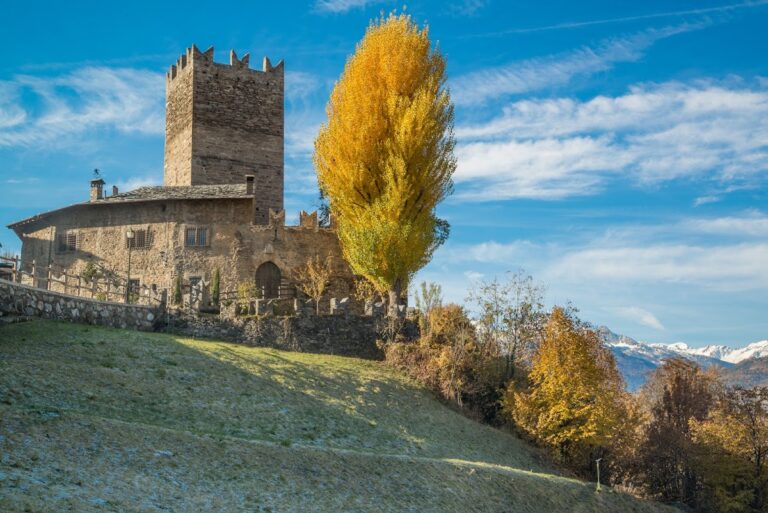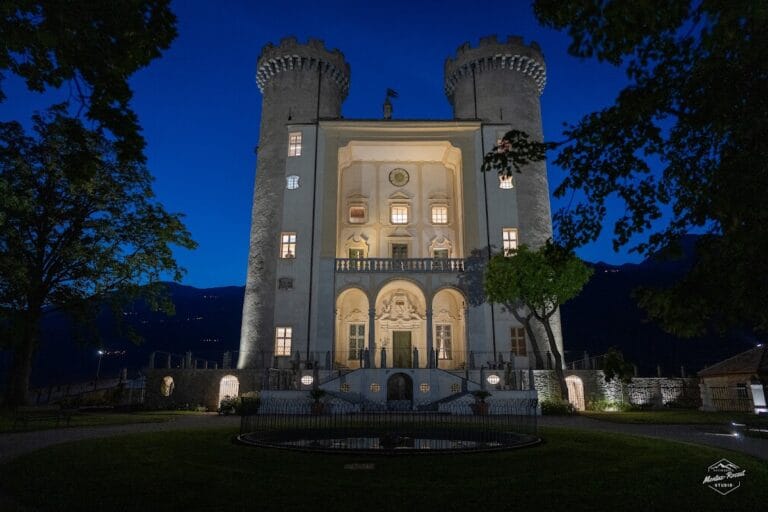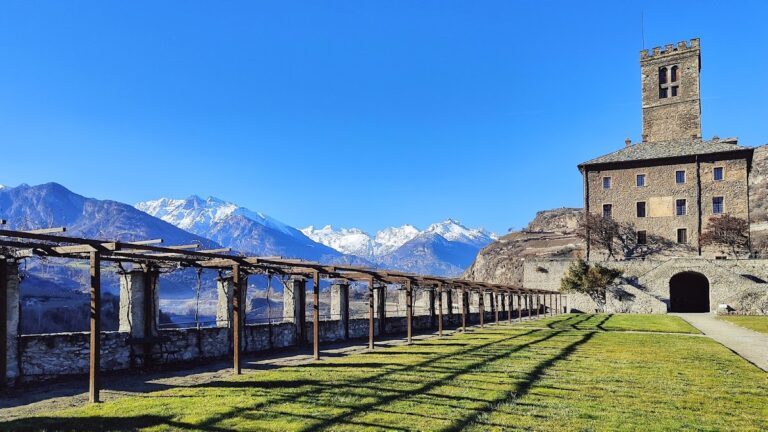Royal Castle of Cogne: A Medieval Fortress in Italy
Visitor Information
Google Rating: 4.6
Popularity: Low
Google Maps: View on Google Maps
Official Website: www.residencechateauroyal.com
Country: Italy
Civilization: Unclassified
Remains: Military
History
The royal castle of Cogne stands in the village of Cogne, Italy, a medieval structure built by the local feudal authorities under ecclesiastical control. Its origins trace back to the late 12th century when Thomas I, Count of Savoy, Aosta, and Moriana, granted the Bishop of Aosta the rights to erect a fortress in this alpine community. This construction established the bishop’s dual authority, both spiritual and temporal, over the area.
The castle likely reached completion around 1202, coinciding with the parish church’s inauguration nearby, cementing the bishop’s presence in the village. The earliest certain document from 1245 refers to the building as the “tower of the lord bishop,” confirming its role as a fortified residence. Throughout the medieval period, the castle functioned as the administrative hub for the county of Cogne, where the bishop’s appointed castellan managed local governance and oversaw a garrison stationed within its walls for protection.
In the 15th century, the castle’s role expanded beyond military and administrative uses, becoming the venue for regional political gatherings and public audiences. This period affirmed its status as a center for civic and judicial matters in the valley.
After centuries of use, the castle entered a phase of decline and neglect until the mid-19th century. In 1844, Pierre-Balthazard Chamonin, the local parish priest, began restoration efforts when the parish took ownership from Bishop André Jourdain. However, political changes soon affected the castle’s status. The Siccardi laws of 1850, which suppressed clerical privileges throughout the Kingdom of Sardinia, led to the parish losing the property in 1867.
In 1873, the castle was sold at auction to a royal representative. King Victor Emmanuel II repurposed the building as a hunting lodge within the royal hunting reserve—a territory that later evolved into the Gran Paradiso National Park. Despite this royal endorsement, Victor Emmanuel III showed little interest in the property, allowing it to fall into disuse in the early 20th century. From 1915 onward, the castle became privately owned and adapted for various uses, including as a hotel and a summer camp run by the Sisters of Saint Joseph. Today, it remains in private hands, converted into residential apartments. A commemorative plaque on its façade notes its recognition as an Italian national monument.
Remains
The castle is a five-story structure built on a quadrangular plan, which reflects its origin as a medieval tower house designed for both defense and residence. Its compact, solid form speaks to the original purpose of a fortified building capable of withstanding attack while providing living quarters. Constructed primarily of stone, the castle has undergone several renovations over the centuries that have altered aspects of its medieval design.
Positioned directly beside the church of Sant’Orso at the heart of the village, the castle’s location creates an intimate link between the religious and administrative centers of medieval Cogne. Although its original medieval features have been modified, the sturdy appearance of the building continues to reveal its historical role as a stronghold and local seat of power.
No further specific architectural or decorative details, such as inscriptions, mosaics, or distinctive gates, are documented. The building’s layout and enduring form remain the primary testimony to its historical function and importance within the community. The plaque affixed to the facade today highlights the castle’s importance as a protected monument under Italian cultural heritage laws.










